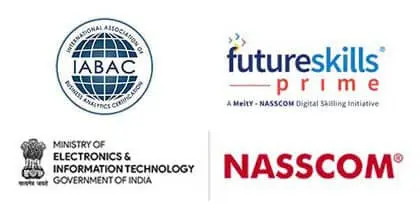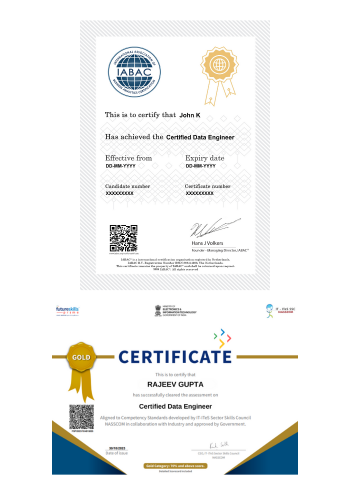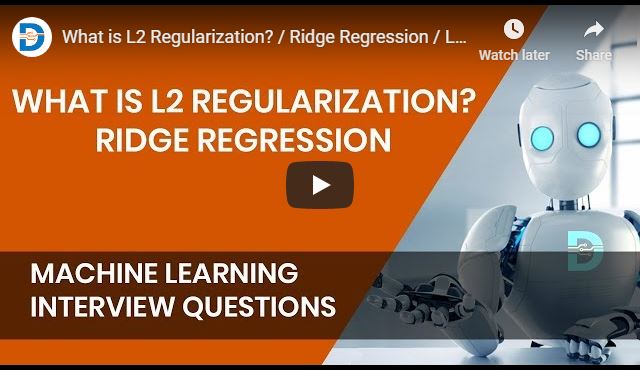Instructor Led Live Online
Self Learning + Live Mentoring
In - Person Classroom Training
The entire training includes real-world projects and highly valuable case studies.
IABAC® certification provides global recognition of the relevant skills, thereby opening opportunities across the world.
MODULE 1: DATA ENGINEERING INTRODUCTION
• What is Data Engineering?
• Data Engineering scope
• Data Ecosystem, Tools and platforms
• Core concepts of Data engineering
MODULE 2: DATA SOURCES AND DATA IMPORT
• Types of data sources
• Databases: SQL and Document DBs
• Managing Big data
MODULE 3: DATA INTEGRITY AND PRIVACY
• Data integrity basics
• Various aspects of data privacy
• Various data privacy frameworks and standards
• Industry related norms in data integrity and privacy: data engineering perspective
MODULE 4: DATA ENGINEERING ROLE
• Who is a data engineer?
• Various roles of data engineer
• Skills required for data engineering
• Data Engineer Collaboration with Data Scientist and other roles.
MODULE 1: PYTHON BASICS
• Introduction of python
• Installation of Python and IDE
• Python objects
• Python basic data types
• String functions part
• String functions part
• Python Operators
MODULE 2: PYTHON CONTROL STATEMENTS
• IF Conditional statement, IF-ELSE
• NESTED IF
• Python Loops Basics, WHILE Statement
• BREAK and CONTINUE statements
• FOR statements
MODULE 3: PYTHON PACKAGES
• Introduction to Packages in Python
• Datetime Package and Methods
MODULE 4: PYTHON DATA STRUCTURES
• Basic Data Structures in Python
• Basics of List
• List methods
• Tuple: Object and methods
• Sets: Object and methods
• Dictionary: Object and methods
MODULE 5: PYTHON FUNCTIONS
• Functions basics
• Function Parameter passing
• Lambda functions
• Map, reduce, filter functions
MODULE 1 : OVERVIEW OF STATISTICS
• Introduction to Statistics: Descriptive And Inferential Statistics
• a.Descriptive Statistics
• b.Inferential Statistis
• Basic Terms Of Statistics
• Types Of Data
MODULE 2 : HARNESSING DATA
• Random Sampling
• Sampling With Replacement And Without Replacement
• Cochran's Minimum Sample Size
• Types of Sampling
• Simple Random Sampling
• Stratified Random Sampling
• Cluster Random Sampling
• Systematic Random Sampling
• Multistage Sampling
• Sampling Error
• Methods Of Collecting Data
MODULE 3 : EXPLORATORY DATA ANALYSIS
• Exploratory Data Analysis Introduction
• Measures Of Central Tendencies, Measure of Spread
• Data Distribution Plot: Histogram
• Normal Distribution
• Z Value / Standard Value
• Empherical Rule and Outliers
• Central Limit Theorem
• Normality Testing
• Skewness & Kurtosis
• Measures Of Distance: Euclidean, Manhattan And Minkowski Distance
• Covariance and Correlation
MODULE 4 : HYPOTHESIS TESTING
• Hypothesis Testing Introduction
• Types of Hypothesis
• P- Value, Crtical Region
• Types of Hypothesis Testing: Parametric, Non-Parametric
• Hypothesis Testing Errors : Type I And Type II
• Two Sample Independent T-test
• Two Sample Relation T-test
• One Way Anova Test
• Application of Hypothesis Testing (Proposed)
MODULE 1: DATA WAREHOUSE FOUNDATION
• Data Warehouse Introduction
• Database vs Data Warehouse
• Data Warehouse Architecture
• Data Lake house
• ETL (Extract, Transform, and Load)
• ETL vs ELT
• Star Schema and Snowflake Schema
• Data Mart Concepts
• Data Warehouse vs Data Mart —Know the Difference
• Data Lake Introduction architecture
• Data Warehouse vs Data Lake
MODULE 2: DATA PROCESSING
• Python NumPy Package Introduction
• Array data structure, Operations
• Python Pandas package introduction
• Data structures: Series and DataFrame
• Importing data into Pandas DataFrame
• Data processing with Pandas
MODULE 3: DOCKER AND KUBERNETES FOUNDATION
• Docker Introduction
• Docker Vs.VM
• Hands-on: Running our first container
• Common commands (Running, editing,stopping,copying and managing images)YAML(Basics)
• Publishing containers to DockerHub
• Kubernetes Orchestration of Containers
• Docker swarm vs kubernetes
MODULE 4: DATA ORCHESTRATION WITH APACHE AIRFLOW
• Data Orchestration Overview
• Apache Airflow Introduction
• Airflow Architecture
• Setting up Airflow
• TAG and DAG
• Creating Airflow Workflow
• Airflow Modular Structure
• Executing Airflow
MODULE 5: DATA ENGINEERING PROJECT
• Setting Project Environment
• Data pipeline setup
• Hands-on: build scalable data pipelines
MODULE 1 : AWS DATA SERVICES INTRODUCTION
• AWS Overview and Account Setup
• AWS IAM Users, Roles and Policies
• AWS S overview
• AWS EC overview
• AWS Lamdba overview
• AWS Glue overview
• AWS Kinesis overview
• AWS Dynamodb overview
• AWS Athena overview
• AWS Redshift overview
MODULE 2 : DATA PIPELINE WITH GLUE
• AWS Glue Crawler and setup
• ETL with AWS Glue
• Data Ingesting with AWS Glue
MODULE 3 : DATA PIPELINE WITH AWS KINESIS
• AWS Kinesis overview and setup
• Data Streams with AWS Kinesis
• Data Ingesting from AWS S using AWS Kinesis
MODULE 4 : DATA WAREHOUSE WITH AWS REDSHIFT
• AWS Redshift Overview
• Analyze data using AWS Redshift from warehouses, data lakes and operations DBs
• Develop Applications using AWS Redshift cluster
• AWS Redshift federated Queries and Spectrum
MODULE 5 : DATA PIPELINE WITH AZURE SYNAPSE
• Azure Synapse setup
• Understanding Data control flow with ADF
• Data Pipelines with Azure Synapse
• Prepare and transform data with Azure Synapse Analytics
MODULE 6 : STORAGE IN AZURE
• Create Azure storage account
• Connect App to Azure Storage
• Azure Blob Storage
MODULE 7: AZURE DATA FACTORY
• Azure Data Factory Introduction
• Data transformation with Data Factory
• Data Wrangling with Data Factory
MODULE 8 : AZURE DATABRICKS
• Azure databricks introduction
• Azure databricks architecture
• Data Transformation with databricks
MODULE 9 : AZURE RDS
• Creating a Relational Database
• Querying in and out of Relational Database
• ETL from RDS to databricks
MODULE 10 : AZURE RDS
• Hands-on Project Case-study
• Setup Project Development Env
• Organization of Data Sources
• AZURE/AWS services for Data Ingestion
• Data Extraction Transformation
MODULE 1: GIT INTRODUCTION
• Purpose of Version Control
• Popular Version control tools
• Git Distribution Version Control
• Terminologies
• Git Workflow
• Git Architecture
MODULE 2: GIT REPOSITORY and GitHub
• Git Repo Introduction
• Create New Repo with Init command
• Copying existing repo
• Git user and remote node
• Git Status and rebase
• Review Repo History
• GitHub Cloud Remote Repo
MODULE 3: COMMITS, PULL, FETCH AND PUSH
• Code commits
• Pull, Fetch and conflicts resolution
• Pushing to Remote Repo
MODULE 4: TAGGING, BRANCHING AND MERGING
• Organize code with branches
• Checkout branch
• Merge branches
MODULE 5: UNDOING CHANGES
• Editing Commits
• Commit command Amend flag
• Git reset and revert
MODULE 6: GIT WITH GITHUB AND BITBUCKET
• Creating GitHub Account
• Local and Remote Repo
• Collaborating with other developers
MODULE 1 : DATABASE INTRODUCTION
MODULE 2 : SQL BASICS
MODULE 3 : DATA TYPES AND CONSTRAINTS
MODULE 4 : DATABASES AND TABLES (MySQL)
MODULE 5 : SQL JOINS
MODULE 6 : SQL COMMANDS AND CLAUSES
MODULE 7 : DOCUMENT DB/NO-SQL DB
MODULE 1: BIG DATA INTRODUCTION
• Big Data Overview
• Five Vs of Big Data
• What is Big Data and Hadoop
• Introduction to Hadoop
• Components of Hadoop Ecosystem
• Big Data Analytics Introduction
MODULE 2: HDFS AND MAP REDUCE
• HDFS – Big Data Storage
• Distributed Processing with Map Reduce
• Key Terms: Output Format
• Partitioners Combiners Shuffle and Sort
• Hands-on Map Reduce task
MODULE 3: PYSPARK FOUNDATION
• PySpark Introduction
• Resilient distributed datasets (RDD),Working with RDDs in PySpark, Spark Context , Aggregating Data with Pair RDDs
• Spark Databricks
• Spark Streaming
MODULE 1: SPARK SQL and HADOOP HIVE
• Introducing Spark SQL
• Spark SQL vs Hadoop Hive
• Working with Spark SQL Query Language
MODULE 2: KAFKA and Spark
• Kafka architecture
• Kafka workflow
• Configuring Kafka cluster
• Operations
MODULE 3: KAFKA and Spark
• Creating an HDFS cluster with containers
• Creating pyspark cluster with containers
• Processing data on hdfs cluster with pyspark cluster
MODULE 1: TABLEAU FUNDAMENTALS
• Introduction to Business Intelligence & Introduction to Tableau
• Interface Tour, Data visualization: Pie chart, Column chart, Bar chart.
• Bar chart, Tree Map, Line Chart
• Area chart, Combination Charts, Map
• Dashboards creation, Quick Filters
• Create Table Calculations
• Create Calculated Fields
• Create Custom Hierarchies
MODULE 2: POWER-BI Basics
• Power BI Introduction
• Basics Visualizations
• Dashboard Creation
• Basic Data Cleaning
• Basic DAX FUNCTION
MODULE 3: DATA TRANSFORMATION TECHNIQUES
• Exploring Query Editor
• Data Cleansing and Manipulation:
• Creating Our Initial Project File
• Connecting to Our Data Source
• Editing Rows
• Changing Data Types
• Replacing Values
MODULE 4: CONNECTING TO VARIOUS SOURCES
• Connecting to a CSV File
• Connecting to a Webpage
• Extracting Characters
• Splitting and Merging Columns
• Creating Conditional Columns
• Creating Columns from Examples
• Create Data Model
Data engineering refers to the field that focuses on the design, development, and maintenance of systems and processes involved in handling large volumes of data. Data engineers build and manage data infrastructure to ensure data quality and availability for analysis and decision-making.
The benefits of undergoing Data Engineer Training include gaining in-depth knowledge of data engineering concepts, acquiring practical skills in data pipeline development and management, improving employability in the growing field of data engineering, and staying updated with industry practices and technologies.
The prerequisites for enrolling in a Data Engineer Course in Rourkela may vary, but a basic understanding of programming, databases, and data concepts is beneficial. Some courses may require a background in computer science or related fields.
The fees for Data Engineer Training in Rourkela vary depending on the institute, course duration, and curriculum. It is recommended to check with specific training providers for detailed fee information and any available scholarships or discounts.
The best institute for Data Engineer Training in Rourkela depends on individual preferences and specific requirements. It is advisable to research and compare different institutes based on curriculum, faculty expertise, industry reputation, alumni reviews, and placement opportunities.
After completing Data Engineer Training, individuals can pursue job roles such as Data Engineer, Data Architect, ETL Developer, Data Warehouse Manager, Big Data Engineer, Database Administrator, or Cloud Data Engineer. These roles involve designing and managing data infrastructure, developing data pipelines, and ensuring efficient data processing and storage.
A bachelor's degree in computer science, information technology, or a related field is typically required for a data engineering career. However, some positions may require a master's degree or higher level of education, depending on the organization and complexity of the data engineering tasks.
While a postgraduate (PG) degree is not mandatory for Data Engineer Training, it can be beneficial for gaining a deeper understanding of advanced data engineering concepts and research methodologies. However, individuals with a bachelor's degree and practical experience can also have successful careers in data engineering.
Essential skills for a data engineer include proficiency in programming languages like Python, SQL, or Scala, knowledge of database systems and data modeling, familiarity with big data technologies such as Hadoop and Spark, experience with data integration and ETL processes, understanding of cloud platforms and data warehousing, and strong problem-solving and analytical abilities.
The choice of language for data engineering depends on specific requirements and the technology stack being used. However, Python is widely preferred in the data engineering field due to its versatility, extensive libraries for data manipulation and analysis, and ease of use. SQL is also essential for working with relational databases and querying data. Other languages like Scala and Java are commonly used in big data processing frameworks like Apache Spark.
Data Analytics offers promising career opportunities in roles such as data analysts, data scientists, business analysts, and data engineers. Skilled professionals are in high demand across diverse industries.
Being a data analyst can be challenging as it involves working with complex datasets, applying analytical techniques, and staying updated with emerging technologies. Strong analytical and problem-solving skills are essential.
Data engineering can be defined as the discipline that involves designing, constructing, and maintaining the systems, processes, and infrastructure necessary for the efficient and reliable collection, storage, transformation, and analysis of large volumes of data. Data engineers play a crucial role in developing and managing the pipelines that extract, transform, and load data from various sources into data warehouses or data lakes, ensuring data quality, integrity, and availability for further analysis and decision-making.
Data Engineer Training offers several benefits, including gaining comprehensive knowledge of data engineering concepts, acquiring practical skills in data pipeline development and management, enhancing career prospects in the growing field of data engineering, and staying updated with industry practices and technologies.
A career in data engineering typically requires a strong educational background in computer science, information technology, or a related field. A bachelor's degree is often the minimum requirement, but some positions may prefer or require a master's degree, especially for more advanced or research-oriented roles.
The requirements for joining a Data Engineer Course in Rourkela typically include a bachelor's degree in a related field (such as computer science or engineering), basic programming skills, knowledge of data and databases, familiarity with big data technologies, and a basic understanding of mathematics and statistics.
The cost of Data Engineer Training in Rourkela can vary due to factors such as the institute selected, program duration, delivery mode (online or classroom), and any additional features included. On average, the fees for data engineer training in Rourkela usually range from 40,000 INR to INR 1,00,000.
With the exponential growth of data and the increasing importance of data-driven decision-making in organizations across industries, the demand for skilled data engineers is expected to continue rising. Data engineering plays a critical role in managing and processing large volumes of data efficiently, ensuring data quality and availability for analysis. As businesses seek to harness the power of data to gain insights and drive innovation, data engineers will be in high demand to design and maintain robust data infrastructure, develop efficient data pipelines, and implement scalable solutions.
After completing Data Engineer Training, individuals can pursue various career options, including roles such as Data Engineer, Data Architect, ETL Developer, Data Warehouse Manager, Big Data Engineer, Database Administrator, or Cloud Data Engineer. These roles involve designing and managing data infrastructure, developing data pipelines, and ensuring efficient data processing and storage.
No, DevOps and data engineering are not interchangeable terms. DevOps is a set of practices that combines software development and IT operations to improve collaboration and efficiency, while data engineering focuses specifically on the management and processing of data within an organization. Although there may be some overlap in skills and responsibilities, they are distinct disciplines within the technology industry.
The best institute for data engineering training depends on several factors, such as the curriculum, faculty proficiency, industry relationships, alumni testimonials, and available training formats. DataMites is widely regarded as an exceptional institute for data engineering training. Its well-structured curriculum, practical projects aligned with industry requirements, and experienced instructors contribute to a comprehensive learning experience, enabling students to grasp essential data engineering concepts, tools, and techniques.
While a postgraduate degree is not always mandatory for Data Engineer Training, it can provide a deeper understanding of advanced data engineering concepts and research methodologies. However, a bachelor's degree and relevant practical experience can also be sufficient to pursue a successful career in data engineering.
The DataMites Placement Assistance Team(PAT) facilitates the aspirants in taking all the necessary steps in starting their career in Data Science. Some of the services provided by PAT are: -
The DataMites Placement Assistance Team(PAT) conducts sessions on career mentoring for the aspirants with a view of helping them realize the purpose they have to serve when they step into the corporate world. The students are guided by industry experts about the various possibilities in the Data Science career, this will help the aspirants to draw a clear picture of the career options available. Also, they will be made knowledgeable about the various obstacles they are likely to face as a fresher in the field, and how they can tackle.
No, PAT does not promise a job, but it helps the aspirants to build the required potential needed in landing a career. The aspirants can capitalize on the acquired skills, in the long run, to a successful career in Data Science.











